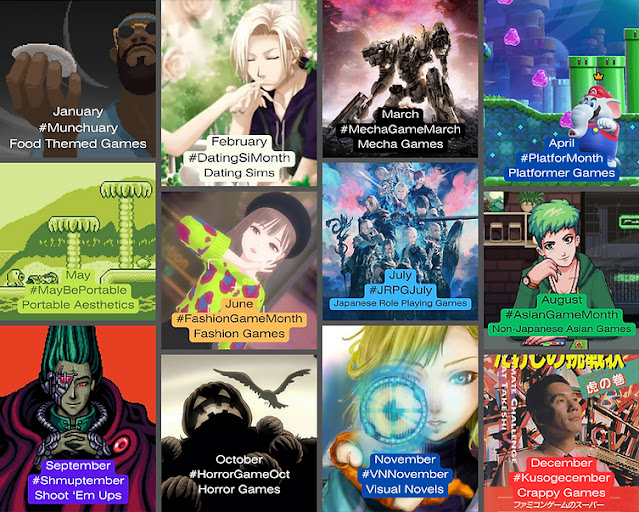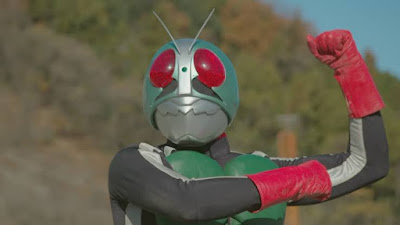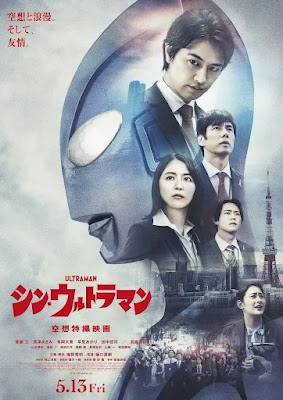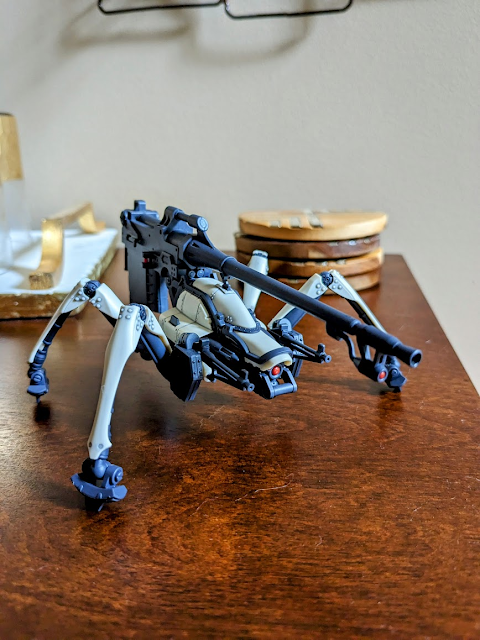At the beginning of this year, I had the idea of using this blog to post photos of my Gundam/mecha models ("gunpla") and share some thoughts about them. However, this year has been much busier than I expected, and my opportunities to build models and write have been limited. I also kept getting stuck in this loop of feeling that my models or photos weren't quite right, so I kept putting it off.
All that said, it's #Blaugust now and I decided to let go of perfectionism and show you what I've got! Some of these are completed and others are works in progress. Enjoy!
86: Juggernaught
While the anime
86 didn't really grab me, its spider-like mecha designs were pretty cool. I built this one back in the January/February timeframe but it took a long time for the weather to warm up enough for me to be able to top-coat it. At the time, this was one of the most modern kits I had built, so the logically laid out instruction manual that was fully in English was a big change from what I'm used to with my older kits. There's even some flavor text from the anime in the manual to provide in-fiction context to the mecha's design. Being a modern kit, it looked pretty nice as-assembled but I still did some customization: painted the eye with metallic red, panel lining and weathering the fastener heads, then applied matte topcoat. Overall, this was a fun one to build and it was interesting to build something non-humanoid for a change!
Gundam Igloo: Zudah
Typically, I don't build Gundams from series I've never seen. However, this one was a thoughtful gift from my sister, so I certainly had to make an exception to my usual rule. On Christmas last year, she sent me a tiny Zudah and on my birthday she sent me the HG Zudah kit. Clearly, she thought there should be a new addition to my "Don't talk to me or my son ever again" gallery and I agree!
Zudah is a fairly standard early-2000s HGUC kit with one exception... his almost comedically large rifle. The rifle is so absurdly large and heavy that his arm joints aren't strong enough for him to hold it upright. I actually had to modify the arm joint just to keep the rifle from pulling his arm out of the socket! Thankfully, HG Zudah has his son there to help him!
Code Geass: Lancelot Albion
When I watched Code Geass back in 2020, I was disappointed to find that there weren't any model kits on the market for it. I thought the more outlandish designs from this series would be fun to build. Thankfully, Bandai pulled through for me and I found Lancelot Albion on the shelf in a local shop last December. It's an HG kit but considerably more complicated than a Gundam would be. I loved the large translucent wings!
Currently, this kit is just in the as-assembled state with one tweak, I used paint on the red and green detail parts rather than the color block stickers it came with. I still plan on panel lining this one and possibly giving it a glossy topcoat instead of the usual matte.
It only felt fitting for mecha called "Lancelot" to defend a castle, so you can see it below guarding my girlfriend's Lego Disney castle.
Witch from Mercury: Beguir-Beu
Considering that Witch from Mercury hasn't even finished airing all its episodes, you really can't get much newer than this one when it comes to Gundam models. I've only assembled the basic structure so far, but it's been a real breeze. The instruction sequencing makes it easy to find the parts you need and everything fits together pretty much perfectly. I'm looking forward to finishing this one whenever I get around to it.
Closing Thoughts
Building modern kits and non-Gundam Bandai kits has been an interesting experience! It's nice to just be able to snap things together without having to worry as much about sanding and painting and such. Of course, I'm still planning on working on some of those more involved kits as well, but it's refreshing to shake things up. I'm also hoping to build another kit on my
Twitch channel sometime soon.
Let me know if you have any questions about these models (or Gunpla in general) and feel free to share anything you've built recently!













